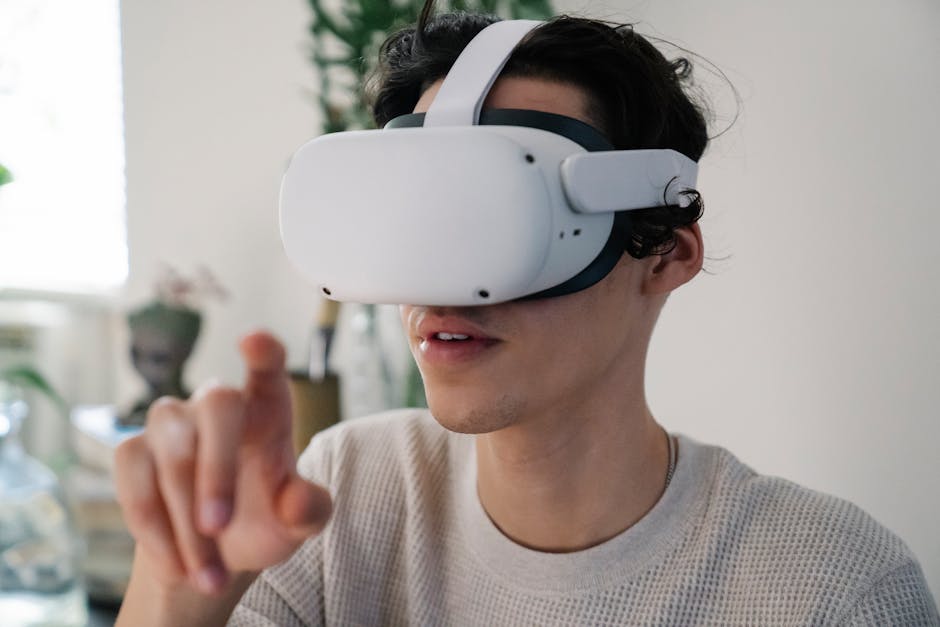Wearable Tech: Gamifying Mental Health with Biometric Gadgets
In recent years, the rise of wearable tech has transcended the realms of fitness tracking and health monitoring, delving into the complex yet fascinating domain of mental health. Mental wellness, often overshadowed by physical health, is receiving much-needed attention through innovative biometric gadgets that gamify emotional well-being. Imagine a world where your day-to-day emotional states are tracked like steps walked, incentivizing positive mental health practices. This is not just a future dream but a rapidly unfolding reality. Together, let’s explore how wearable gadgets can make a significant difference in amplifying mental health efforts while creating lasting positive change in our lives.
The Intersection of Technology and Mental Health
The journey of mental health is highly personal and often laden with challenges. Traditional methods, such as therapy and medication, are still vital. However, the advent of technology has revolutionized how individuals engage with their mental well-being. Integration of wearables into mental health regimes provides real-time data and actionable insights, enabling individuals to make informed choices about their emotional health.
According to a report published by Harvard Business Review, the efficacy of technology in addressing mental health needs is gaining traction. With users showing improved emotional well-being thanks to consistent monitoring and feedback from devices, there's significant interest from both users and mental health professionals alike.
As we delve deeper into this fusion, we will examine a few key areas: the types of wearable tech currently available for mental health, how these gadgets gamify wellness, and the tangible impacts they have on everyday lives.
Types of Wearable Gadgets for Mental Health
From smartwatches to specialized gadgets that track emotional states, wearable tech encompasses a variety of products designed with mental wellness in mind. Let’s look at a few noteworthy examples that are making waves in the industry:
-
Fitness Trackers: While primarily designed to count steps and monitor heart rates, many of today’s fitness trackers, like Fitbit and Garmin, have begun incorporating stress-tracking features. They utilize heart rate variability (HRV) to assess stress levels, inviting users to engage in mindfulness practices when the body’s response indicates stress.
-
Mood-Tracking Wearables: Gadgets like the Moodbeam wristband allow users to input their emotional states throughout the day, allowing for long-term mood tracking. This helps users identify patterns and triggers in their emotional well-being.
-
Smart Biofeedback Devices: Devices that measure biofeedback, such as the Muse headband, provide real-time feedback on brain activity during meditation, ensuring users can track their mental states as they work towards mindfulness and relaxation.
-
VR and AR Tools: Virtual reality can serve as a therapeutic tool that immerses users in relaxing environments, while augmented reality applications can provide daily reminders and interventions for emotional well-being—a new frontier in accessible mental health support.
-
Emotive Jewelry: Companies are innovating by creating wearable jewelry embedded with technology that monitors emotional states. These often communicate via an app, offering feedback about the wearer’s emotional fluctuations.
Each of these gadgets aids users not only by providing data but also instilling a sense of accountability and motivation to engage positively with their mental health.
The Gamification of Mental Health

Gamification—applying game design elements in non-game contexts—is a significant trend transforming how we approach mental health. By integrating game mechanics into wearable tech, manufacturers tap into intrinsic motivators that drive user engagement, making mental health practices more entertaining and rewarding, which can enhance adherence to wellness routines.
Elements of Gamification in Wearable Tech

-
Challenges and Rewards: Many mental health gadgets allow users to set personal challenges related to stress management, meditation hours, or mood tracking. Users earn points or rewards for completing their challenges, weaving a sense of competition into personal growth.
-
Progress Tracking: Devices that visualize user progress create a strong emotional connection. Color-coded ratings for emotional health or stress levels can help users quickly see their improvements or identify when they might need to recalibrate their strategies.
-
Social Connectivity: Some wearables include social features that encourage user interaction. They allow users to share their achievements or meditative practices with friends and family, thereby building a supportive community that reinforces positive habits.
-
Daily Reminders and Nudges: Gadgets often come with notification features that remind users to engage in self-care practices, such as deep breathing exercises or breaks when stress levels rise. This gentle encouragement can turn daily wellness activities into routine habits facilitated by technology.
Real-World Impact of Biometric Gadgets on Mental Health

As we consider the strides made by biometric gadgets in enhancing mental health, it’s vital to analyze their tangible impacts on users’ everyday lives.
Stigma Reduction and Open Awareness

The use of wearable tech to track mental health can reduce the stigma surrounding mental health conditions. Individuals who feel comfortable sharing their experiences through gamified or community-oriented platforms foster greater open discussions about seeking help and addressing emotional struggles.
For instance, a user of a mood-tracking device shared how sharing their data with peers led to candid conversations about depression and anxiety that sparked encouragement to seek therapy. Through these gadgets, users not only become aware of their emotional states but also contribute to a culture that normalizes discussions around mental health.
Enhanced Self-Awareness and Control

One of the most profound impacts of these gadgets is how they enhance self-awareness. Users become more attuned to their emotional patterns and can take proactive measures to address psychological distress. For instance, a study published in the Journal of Medical Internet Research found that individuals using mood-tracking apps reported increased awareness of their mental states and the factors contributing to fluctuations in mood.
With this newfound self-awareness, individuals can implement better coping mechanisms, making adjustments to their routines or seeking professional help when necessary.
Internal Connections and Technological Advancements

The innovative advancements influencing the wearable tech landscape doesn't exist in isolation. As we explore further technological integrations, we can link this discussion to prior movements in tech adoption for mental wellness.
Consider how gadget-driven emotion recognition demonstrates a profound evolution in understanding how tools can analyze emotional states. In this scenario, wearables equipped with AI can offer tailored feedback, guiding users toward personalized self-care strategies based on detected emotional cues.
Additionally, we should reflect on the integration of sound and silence in mental wellness. Tech innovations, similar to noise-canceling tech, create environments conducive to mindfulness. The soundscape plays an often-forgotten role in emotional well-being, making devices that introduce auditory landscapes essential for fostering mental health.
Looking Ahead: The Future of Wearable Tech in Mental Health

As wearable tech and mental health research continue to evolve, we can expect significant advancements throughout the upcoming years. With the trend leaning towards more individualized and accessible solutions, the future promises innovations that could reshape mental health systems fundamentally.
Personalized Mental Wellness Strategies

The next wave of wearable tech will likely move toward hyper-personalization, analyzing a fusion of biometric feedback, genetic data, and environmental contexts to create comprehensive mental health trajectories for users.
Furthermore, a greater emphasis may emerge on haptic feedback technologies, offering tactile experiences that further engage users in mental health practices, such as meditation or mindfulness exercises, making them more immersive.
Integration with Telehealth Platforms

The relationship between wearable tech and telehealth may grow closer, allowing seamless communication between mental health professionals and their clients via biometric data. Therapists can thus offer real-time consultations based on objective data, streamlining the process of crafting tailored treatment plans.
Final Thoughts

The interplay between mental health and the innovative world of wearable tech offers exciting potential. By gamifying emotional wellness through biometric gadgets, we’re given tools that not only enhance our understanding of our mental health but also empower us to take active steps toward fostering wellness.
At the forefront of this initiative, users are engaging in empowering experiences that promote self-awareness, accountability, and community—all integral components in the fight against the mental health stigma. As technology continues to redefine the landscape of mental wellness, we must remain vigilant in ensuring that it extends beyond mere tracking to truly support individuals in their quest for emotional balance and fulfilling lives.
Ready to embrace the power of wearable tech for mental wellness? Take that first step today—engage with gadgets that amplify your emotional health journey!





